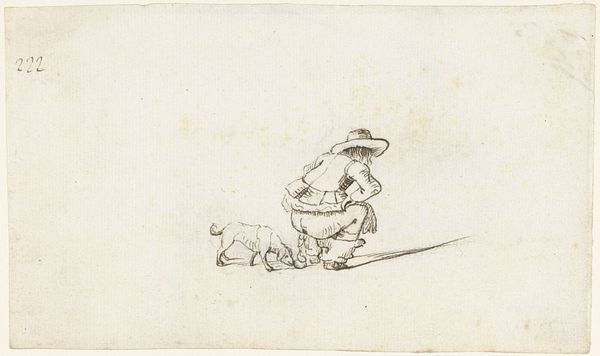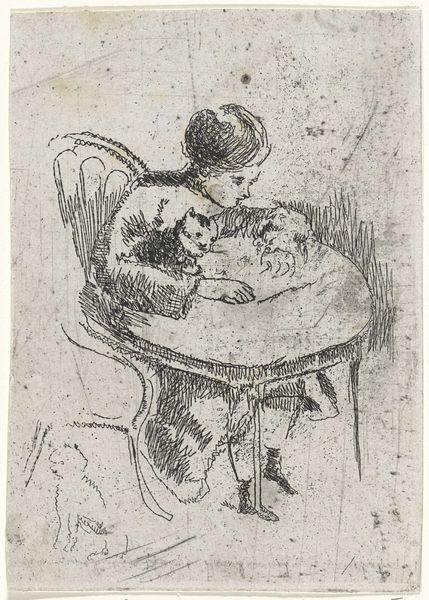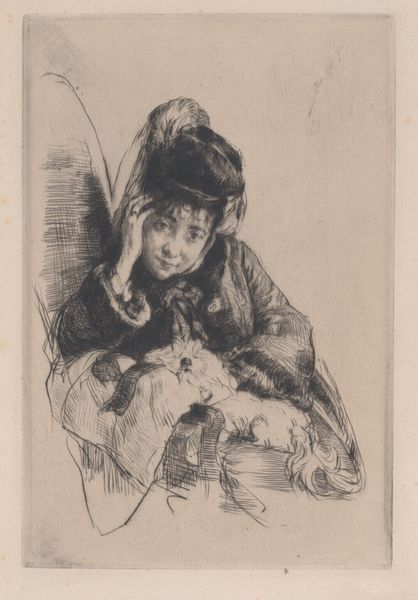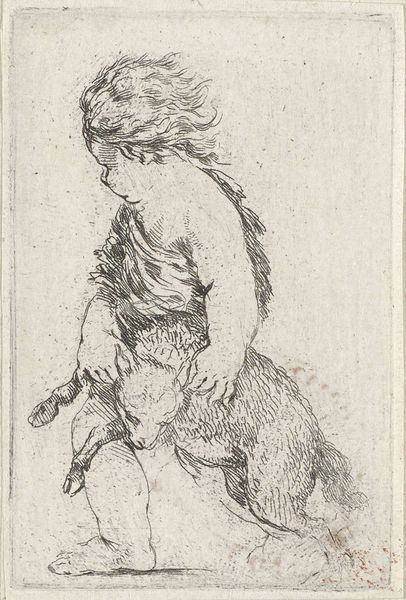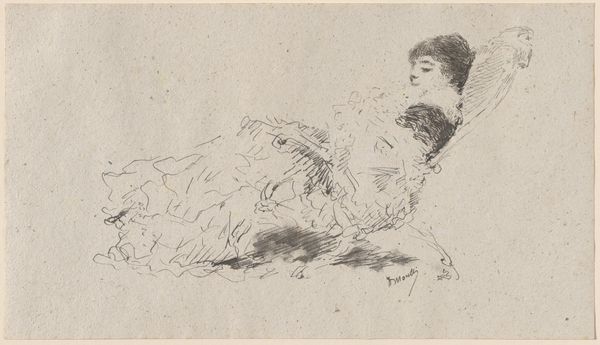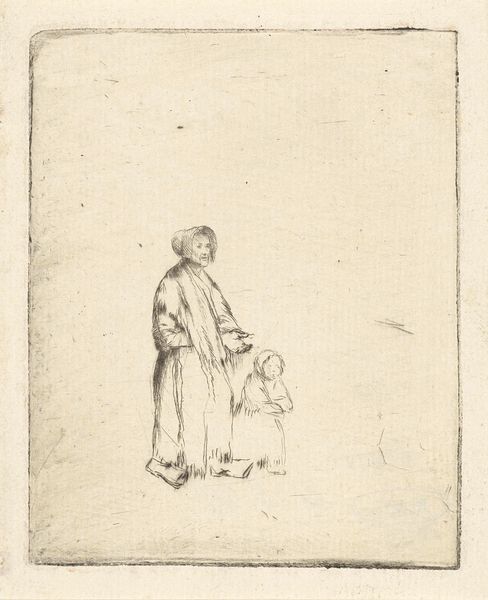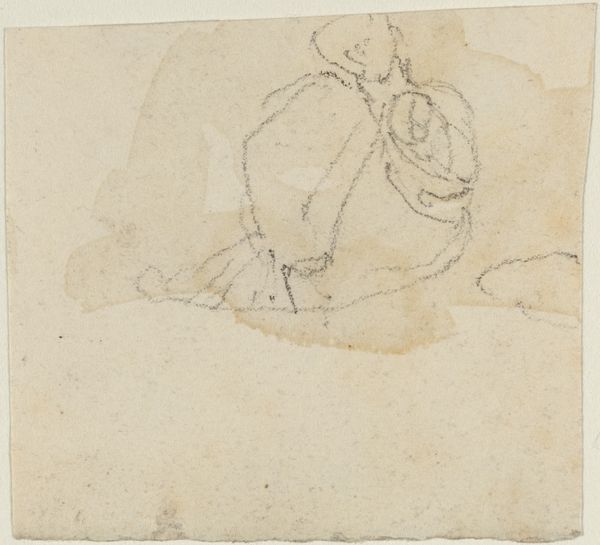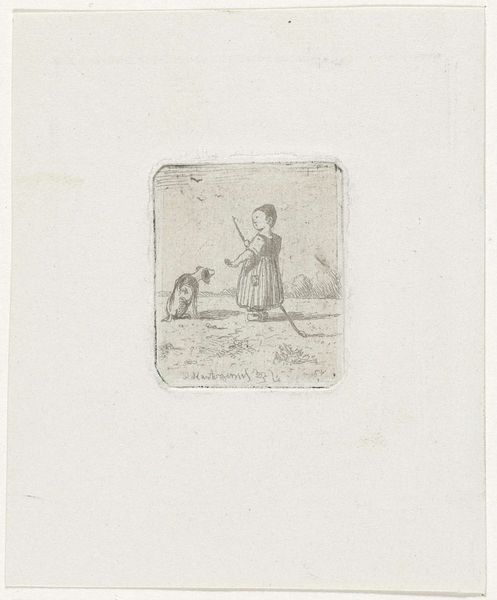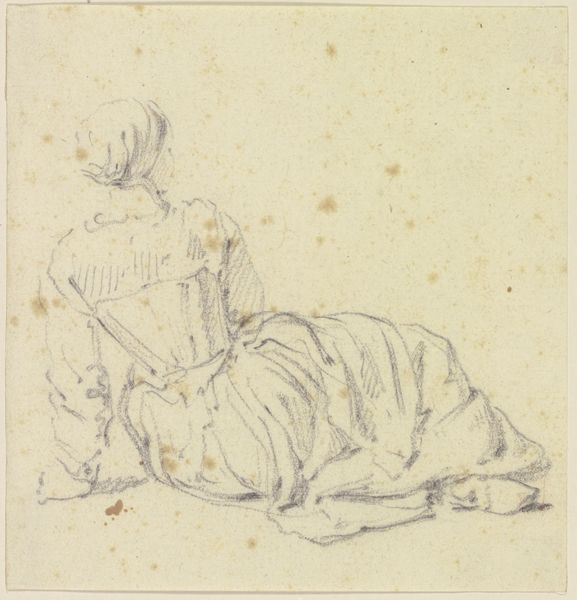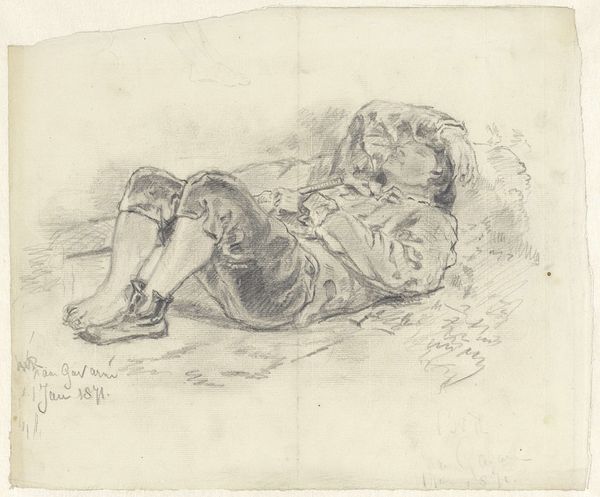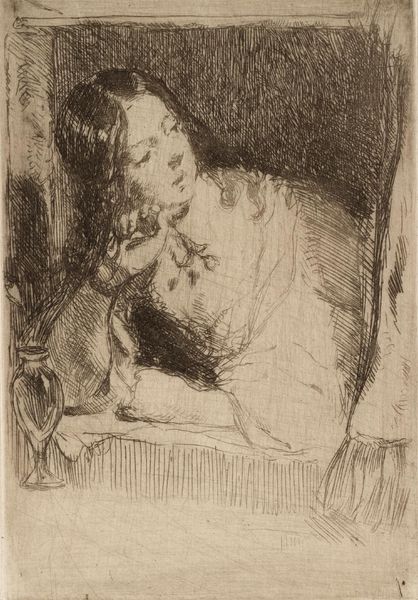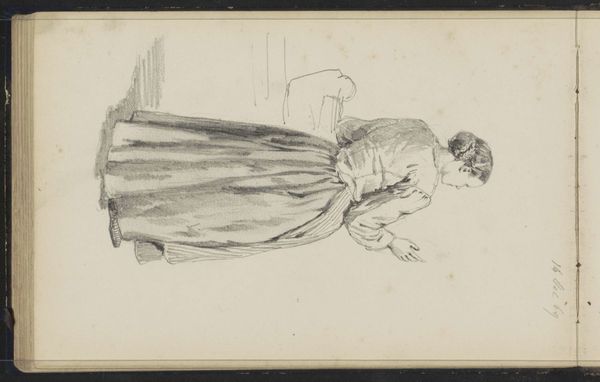
drawing, print, etching, paper, pencil
#
portrait
#
drawing
# print
#
etching
#
pencil sketch
#
paper
#
pencil
#
pencil work
Dimensions: height 109 mm, width 151 mm
Copyright: Rijks Museum: Open Domain
Curator: Before us, we have an etching by Arnoud Schaepkens, entitled "Kinderen met een poes," or "Children with a Cat," believed to have been created sometime between 1831 and 1904. Editor: It has such a delicate feel to it. It's monochromatic, almost like a faded memory rendered in the softest pencil strokes. There's a sweetness, but also a touch of melancholy in their gaze. Curator: Schaepkens was a master of capturing the quotidian moments, particularly within the domestic sphere. Etchings and drawings allowed for wider distribution of images, contributing to evolving ideals around family and childhood in the 19th century. The composition and technique tell us a great deal about the values of the era. Editor: Precisely! Look at how the children are posed—not as cherubic ideals, but with a casualness. There’s this realism, and a definite lack of idealization which implies something about class representation. This isn’t nobility; this is the middle class trying to project values, which, again, the proliferation of prints certainly helped with. What narratives about childhood innocence do you think this etching reinforced or challenged? Curator: That's a shrewd question! I wonder about accessibility. Etchings and prints made art more democratic, but they were still commodities. How many families could actually afford this type of art, and how would that art shape those homes and identities? "Kinderen met een poes" speaks to the growing desire to capture childhood and familial moments for the bourgeoisie, perhaps revealing its function as a sort of status marker or signifier. Editor: The cat is so present as well— it disrupts our perception of childhood as inherently innocent because we're so aware that animals do not adhere to human morality, but the picture of them playing harmoniously sends its own quiet, pro-pet message to an evolving social consciousness. This etching becomes part of that changing relationship between the burgeoning middle-classes, children, animals, and ideals around all three. Curator: Indeed. I find myself returning to the idea of accessibility. To what extent were prints like these instruments of shaping social perception among wider audiences? I'm thankful that our talk provided some useful suggestions of where that query might go next. Editor: I completely concur. Let's not underestimate the image as active, and the agency this un assuming work had. What narratives did it both perpetuate and disrupt and how do we measure its impact, given the materials, content and accessibility of such art. It's fascinating, indeed!
Comments
No comments
Be the first to comment and join the conversation on the ultimate creative platform.
